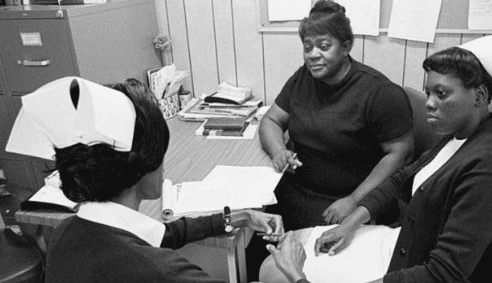Improving Community Outcomes through Health Center Program Data [Part 2]
August 6th, 2020 | story
The national Health Center Program grew out of the civil rights movements of the 1960s and the era’s debate about how to expand access to quality health care in urban and rural areas where it was scarce.
In 1965, two doctors from Boston submitted a novel concept to the U.S. Office of Economic Opportunity. They proposed launching neighborhood health centers, governed  by patients from the community, in areas where people were living in deep poverty and in desperate need of adequate care. It was approved as a demonstration project within the federal War on Poverty, and the first center was launched in Boston’s underserved, urban Dorchester neighborhood. That was soon followed by a second in Mound Bayou, a rural area of Mississippi.
by patients from the community, in areas where people were living in deep poverty and in desperate need of adequate care. It was approved as a demonstration project within the federal War on Poverty, and the first center was launched in Boston’s underserved, urban Dorchester neighborhood. That was soon followed by a second in Mound Bayou, a rural area of Mississippi.
The concept succeeded, and more centers were built to meet the needs of those who lacked access to care. There are now nearly 1,500 centers with over 13,000 delivery sites covering every U.S. state, the District of Columbia, Puerto Rico, the Virgin Islands, and the Pacific Basin. Together, they provide care to more than 30 million people. The

clinics have become an important source of community care for a range of patients, but their core mission is still to provide high-quality care regardless of income or insurance.
The Origins of the UDS
As the national Health Center Program system grew, it was initially tracked through the Bureau of Health Services Common Reporting Requirements (BCRR). Some of the elements of that report are still collected. Around 2000, HRSA contracted with JSI to revamp the system and take advantage of technology that could offer more efficient and accurate data collection.
At the time, we were already working with the National Health Service Corps to develop an electronically reported version of a UDS-style report and database to evaluate that program, which places providers in underserved areas in return for scholarship or loan repayment services. The database was intended to track and demonstrate the program’s effectiveness in placing providers where they were most needed, but it was also designed to collect data from the sites that could be used to better understand the people they were serving and the services they provided.
Based on the work with the National Health Service Corps, our staff recognized the potential to create an extensive database that could be used even beyond the agency to shape the broader health care safety net.
“We understood that the real value of the data lies outside the walls of the federal agency, in helping health centers figure out how they’re doing,” Turer said. “They needed benchmark data, both business and clinical, to judge the degree to which they were operating efficiently and effectively.”
While JSI initially developed the critical technology to collect and validate the data electronically in 2000, our key contributions were also in the systems developed to gather, break down, and compare the data from center to center as well as within a national overview. This allowed a look at short- and long-term trends along with the ability to quickly make comparisons to national norms and relevant comparison groups of other health centers with similar characteristics.
In return for the efforts put into providing and validating the extensive data reported on their individual organizations, health centers received an individualized feedback report that presented a summarized version of key measures calculated from their data and displayed in comparison to other health centers. Initially, the software was distributed on CD and the report was sent on paper and later by PDF. However, as technology advanced, the UDS has been updated to take advantage of better computing capabilities and online collaboration tools. Over the years, it has incorporated the increasing use of electronic medical records to improve efficiency.
Next: A Work in Progress all Year Long [Part 3]
Previous: Using Data to Reduce Barriers to Colon Cancer Screening [Part 1]
We strive to build lasting relationships to produce better health outcomes for all.